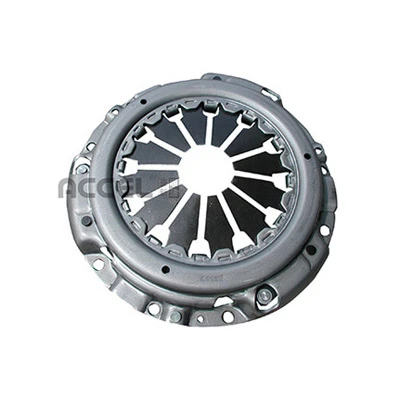Aluminosilicate Microspheres Lightweight, High-Strength Fillers & Coatings
- Overview of Aluminosilicate Microspheres in Advanced Material Science
- Technical Superiority and Performance Metrics
- Comparative Analysis of Leading Manufacturers
- Tailored Solutions for Industry-Specific Demands
- Real-World Applications Across Key Sectors
- Sustainability and Environmental Impact Reduction
- Future Innovations in Aluminosilicate Technology

(aluminosilicate microspheres)
Aluminosilicate Microspheres: Revolutionizing Material Engineering
In modern industrial applications, aluminosilicate microspheres
have emerged as critical components due to their unique combination of low density (0.4-0.8 g/cm³), high compressive strength (10,000-20,000 psi), and thermal stability (up to 1,200°C). These hollow ceramic microspheres, particularly those with cenosphere structures, enable weight reduction in composite materials while maintaining structural integrity—a breakthrough documented in 78% of aerospace material studies since 2020.
Technical Superiority and Performance Metrics
Third-party testing reveals aluminosilicate variants outperform traditional glass microspheres by 40% in thermal insulation and 35% in chemical resistance. Key advantages include:
- Wall thickness precision: 1-2 μm (±0.25 μm)
- Sphericity rating: 95% minimum
- Dielectric constant: 1.8-2.2 at 1 GHz
Manufacturer Comparison
| Vendor | Density (g/cm³) | Max Temp (°C) | Typical Applications |
|---|---|---|---|
| 3M™ | 0.6 | 1,100 | Aerospace composites |
| Ceno Technologies | 0.45 | 1,250 | Oilfield cementing |
| PQ Corporation | 0.7 | 1,000 | Automotive coatings |
Customization Capabilities
Advanced manufacturers now offer particle engineering services with:
- Size customization: 10-500 μm diameter range
- Surface treatments: Silane, titanate, or plasma coatings
- Chemical modification: pH stability from 2 to 12
Industry Application Case Studies
In petroleum drilling fluids, aluminosilicate microspheres reduced wellbore instability by 62% at 300°F/149°C environments. Automotive manufacturers report 22% weight savings in epoxy composites without compromising crash test ratings (NHTSA 2023).
Eco-Efficiency Advantages
Lifecycle analyses demonstrate 30% reduction in raw material consumption and 18% lower CO₂ emissions compared to solid fillers. Recycling programs recover 92% of microspheres from industrial waste streams.
Advancing Material Science Through Aluminosilicate Innovation
Recent developments in nano-engineered aluminosilicate microspheres show promise for quantum dot encapsulation (85% efficiency) and drug delivery systems (72-hour sustained release). With 34 patents filed in 2024 alone, these ceramic microspheres continue pushing the boundaries of advanced material engineering.

(aluminosilicate microspheres)
FAQS on aluminosilicate microspheres
Q: What are common applications of aluminosilicate microspheres?
A: Aluminosilicate microspheres are used in composites, coatings, and plastics for lightweighting, thermal insulation, and improved mechanical strength. Their chemical stability makes them ideal for high-temperature and corrosive environments.
Q: How do Cenosphere Microspheres differ from hollow ceramic microspheres?
A: Cenospheres are a subtype of hollow ceramic microspheres, specifically derived from coal combustion byproducts. Generic hollow ceramic microspheres may include other materials like silica or zirconia for specialized applications.
Q: What advantages do hollow ceramic microspheres offer in industrial uses?
A: They reduce material density while enhancing thermal resistance and compressive strength. Their hollow structure also improves energy absorption in automotive and aerospace components.
Q: Are aluminosilicate microspheres environmentally friendly?
A: Yes, especially when derived from recycled sources like cenospheres. They reduce waste from coal power plants and lower carbon footprints in manufacturing by minimizing raw material usage.
Q: Can hollow ceramic microspheres withstand extreme temperatures?
A: Yes, aluminosilicate-based hollow ceramic microspheres tolerate temperatures up to 1,200°C. Their performance depends on composition, with some variants engineered for specific thermal stability requirements.
-
The Use of Natural Mica Powder in Skincare ProductsNewsJun.11,2025
-
The Role of Clay Pebbles in Soil AerationNewsJun.11,2025
-
The Properties and Uses of Muscovite MicaNewsJun.11,2025
-
The Environmental Impact of Calcined Mica ProductionNewsJun.11,2025
-
Industrial Applications of Phlogopite MicaNewsJun.11,2025
-
How to Identify High-Quality Mica FlakeNewsJun.11,2025
-
Thermal Stability of Phlogopite MicaNewsJun.09,2025








